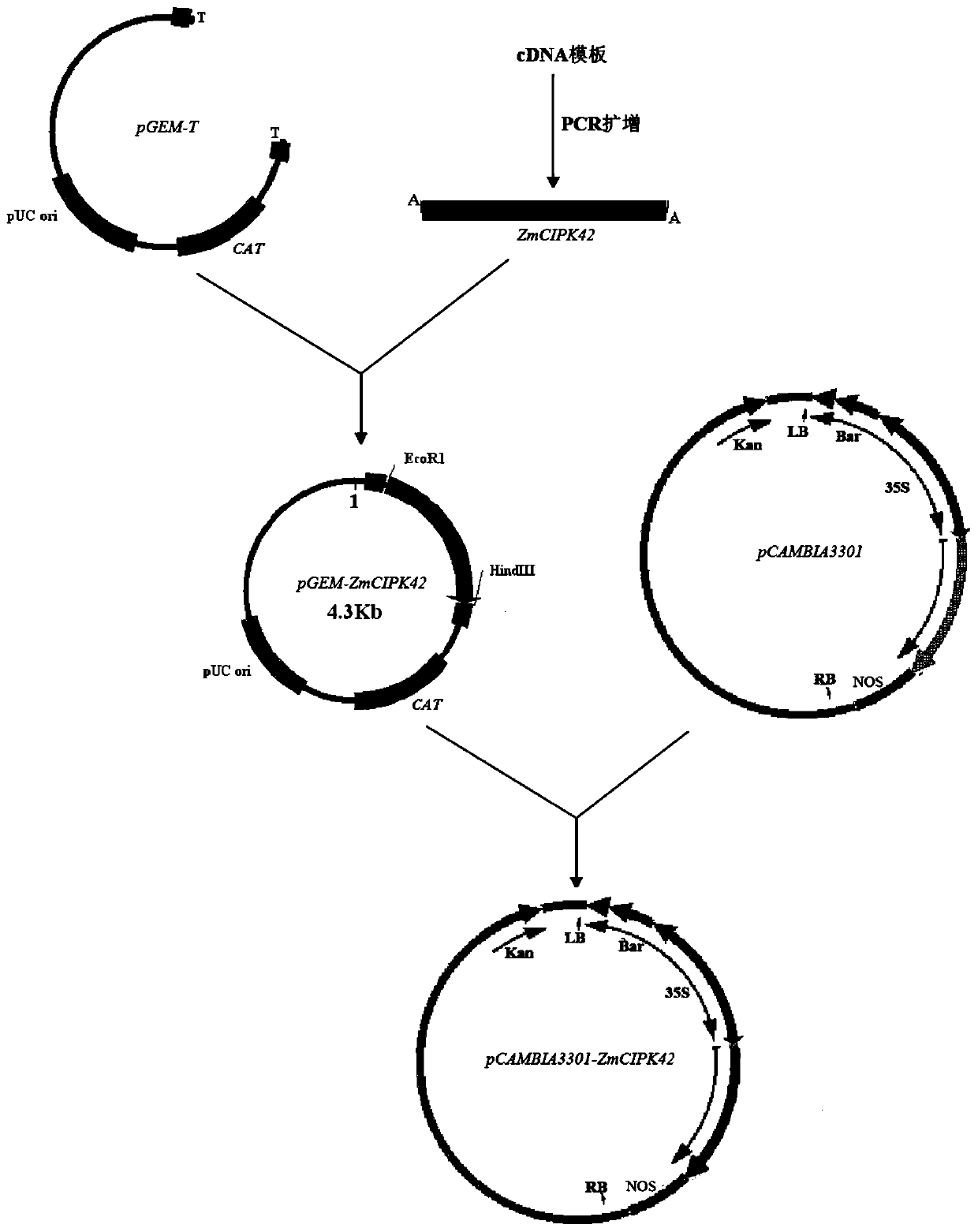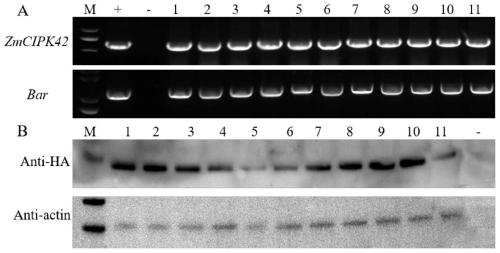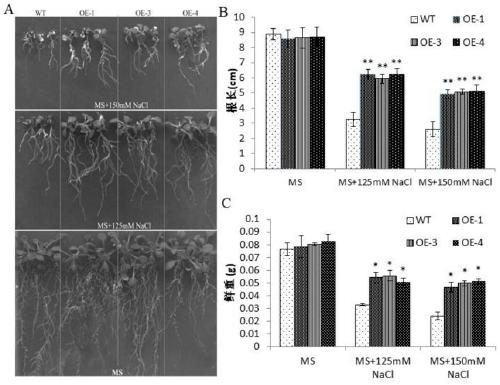Application of corn CIPK42 protein and coding gene of corn CIPK42 protein in regulation and control of salt stress tolerance of plants
A technology for encoding genes and transgenic plants, applied in the field of plant genetic engineering, can solve the problems of long cycle, difficult to determine gene function, low transformation efficiency, etc., and achieve the effect of improving salt tolerance and growth performance, and improving salt tolerance.
- Summary
- Abstract
- Description
- Claims
- Application Information
AI Technical Summary
Problems solved by technology
Method used
Image
Examples
Embodiment 1
[0052] Embodiment 1 Contains the construction of the expression vector of CIPK42 protein kinase gene
[0053] 1. Based on the sequence of the known target gene, primers were designed to amplify the ZmCIPK42 gene sequence from the cDNA of the maize B73 inbred line, and the target fragment was recovered with an agarose gel kit.
[0054] 2. Ligate the recovered fragments with the pGEM-T vector, then transform Escherichia coli DH5α competent cells, obtain positive single clones, send them for sequencing, after sequence comparison, obtain single clones consistent with the original sequence, shake the bacteria and extract the single clones The plasmid was cloned and named pGEM-ZmCIPK42.
[0055] 3. Using pGEM-ZmCIPK42 as the entry vector and pCAMBIA3301 plasmid as the expression vector, the recombinant vector pCAMBIA3301-ZmCIPK42 was obtained through recombination reaction.
[0056] Schematic diagram of expression vector construction see figure 1 .
Embodiment 2
[0057] Embodiment 2 Transformation and screening of Arabidopsis containing CIPK42 protein kinase gene
[0058] 1. The ZmCIPK42 overexpression vector constructed in Example 1 was transformed into Agrobacterium Gv3101.
[0059] 2. Transformation of wild type Arabidopsis thaliana by floral dipping method.
[0060] 3. Convert the T obtained after conversion 0 The generation seeds were vernalized for 3 days, and then directly sowed in nutrient soil for growth. After about two weeks of normal growth, spray T with 0.5‰ of PPT (phosphinothricin) 0 Transformed plants were screened from Arabidopsis thaliana.
[0061] 4. Since the transformation overexpression vector pCAMBIA3301 used has the Bar gene against PPT (phosphinothricin), it can be transferred into the plant along with the target gene during transformation, so most of the untransformed plants die after spraying PPT (phosphinothricin) , while the transformed plants were still able to grow normally. The transformed plants wer...
Embodiment 3
[0064] Embodiment 3 Containing the transformed maize of CIPK42 protein kinase gene and screening
[0065] 1. Preparation of plant receptor material: 10-13 days after the pollination of the corn inbred line B104, take the corn young ears and peel off the bract leaves on the ultra-clean workbench, and take out the immature embryos. Put the immature embryos with the scutellum up, inoculate them on 1 / 2 MS medium, inoculate 20-40 immature embryos in each dish, and culture them in the dark at 28°C for 2-3 weeks, then the callus can be induced.
[0066] 2. Preservation method of the bacterial strain: pick up the single colony of the constructed ZmCIPK42 Agrobacterium LB4404 (the ZmCIPK42 overexpression vector constructed in Example 1 is transferred into the Agrobacterium LB4404 to obtain ZmCIPK42 Agrobacterium LB4404) with an inoculation loop and streaked on the On the YEP solid medium with corresponding antibiotics, pick a single colony of Agrobacterium after 2 days of subculture, a...
PUM
 Login to View More
Login to View More Abstract
Description
Claims
Application Information
 Login to View More
Login to View More - R&D Engineer
- R&D Manager
- IP Professional
- Industry Leading Data Capabilities
- Powerful AI technology
- Patent DNA Extraction
Browse by: Latest US Patents, China's latest patents, Technical Efficacy Thesaurus, Application Domain, Technology Topic, Popular Technical Reports.
© 2024 PatSnap. All rights reserved.Legal|Privacy policy|Modern Slavery Act Transparency Statement|Sitemap|About US| Contact US: help@patsnap.com










